Founded as a city by the Romans on an ancient Paleoveneto site, Padua became rich and populous during the Middle Ages, and also thanks to its prestigious University, founded in 1222, it attracted students and scientists from all over Italy and Europe. Here taught the scientist and astronomer Galileo Galilei, one of the founders of the Scientific Method, who lived in Padua for many years and whose chair is kept in the atrium of the Aula Magna del Bo, the ancient seat of the Universitas Patavina.
Between the Middle Ages and the Renaissance, Padua was enriched in art and architecture, welcoming the most famous artists of the time who, at the service of the city or private families, created important architectural monuments such as the Palazzo della Ragione, the Basilica del Santo, the Clock Tower, the seat of the University (the Bo), the Prato della Valle and many churches and private noble palaces.
Even painting knows its highest expression here, thanks to painters of the caliber of Giotto, who frescoes his masterpiece, the Scrovegni Chapel, and to many others such as Guariento di Arpo, Giusto de' Menabuoni, Altichiero da Zevio, Jacopo Avanzi and Jacopo from Verona. Thanks to the pictorial cycles of the fourteenth century, in 2021 "Padova Urbs picta" was included in the Unesco World Heritage list.
Padua also houses the oldest university botanical garden in the world, also registered in the World Heritage List since 1997. Founded in 1545 by a resolution of the Senate of the Venetian Republic for the cultivation of medicinal plants, it retains its original location inside the historic center of Padua, between the great basilicas of Sant'Antonio and Santa Giustina. Today the Botanical Garden complex has been enriched by ultra-modern greenhouses that host the "Garden of Biodiversity" project: 1300 plant species inserted in homogeneous environments for humidity and temperatures, which simulate the climatic conditions of the different biomes of the planet.
-
Loading...
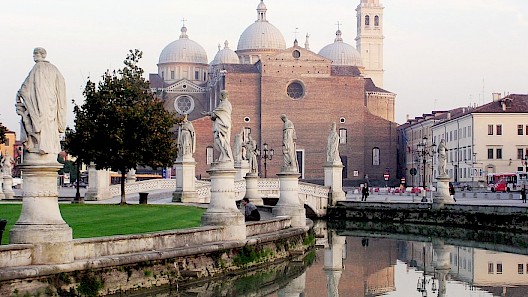
Padua - the Santa Giustina Basilica from Prato della Valle -
Loading...
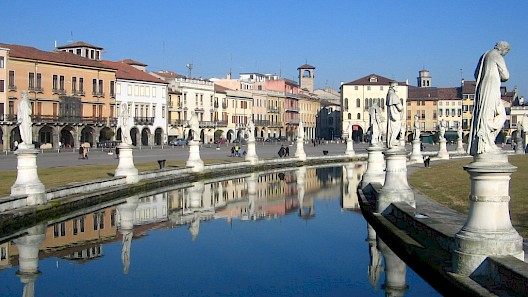
Padova - Prato della Valle with its famous statues -
Loading...
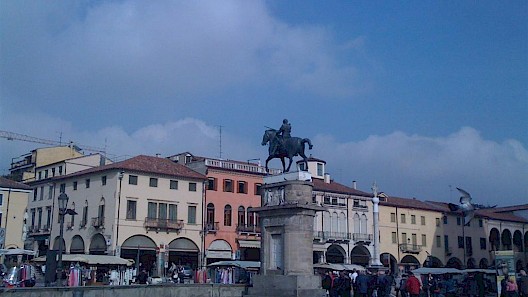
Padua - the Gattamelata statue in front of the Santo's Basilica -
Loading...
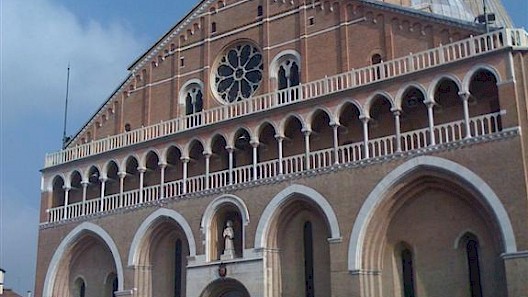
Padue - The Basilica of St. Anthony -
Loading...
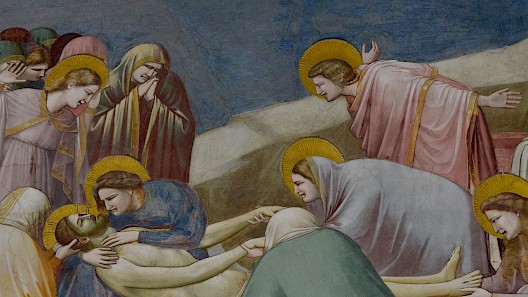
The Scrovegni chapel -
Loading...
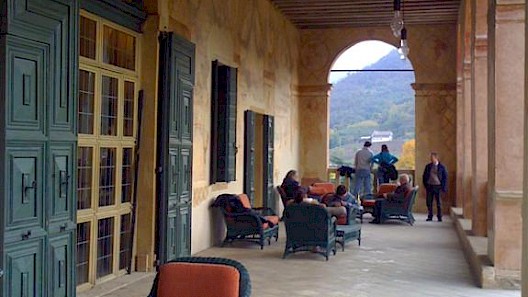
Torreglia - The "loggia" at Villa dei Vescovi
A curiosity: Padua is called "The city of the saint without name, the lawn without grass and the café without doors", here is why ...
The saint without a name is St. Anthony of Padua, actually born in Portugal but lived for some years in Padua where he preached and where he died and was buried in 1231. In the heart of Padua the Basilica is dedicated to him, a real museum of art that spans the centuries: you can admire the frescoes by Giotto, Alticchiero and Menabuoi, the bronzes by Donatello. By the Paduans this church is commonly called "the basilica of the Saint" or even just "the Saint", perhaps due to the importance and universal fame that Saint Anthony had and still has among the faithful.
The lawn without grass is Prato della Valle, a large elliptical square characterized by a central green island, called Isola Memmia in honor of the mayor who commissioned the work in 1775, surrounded by a canal decorated with a double base of numbered statues of famous characters of the past. This architectural work was created to recover and embellish a space that since ancient times was intended for the meeting of the population.
The "café without doors" is the Caffè Pedrocchi, located in the historic center between the Town Hall and the University, a historic café founded in 1772 among the most famous in Italy. It is called "without doors" because from 1831 (the year of its renovation) till 1916 it was always open, day and night, becoming the place for students, intellectuals, artists, patriots from the Risorgimento, but also for the city bourgeoisie.
